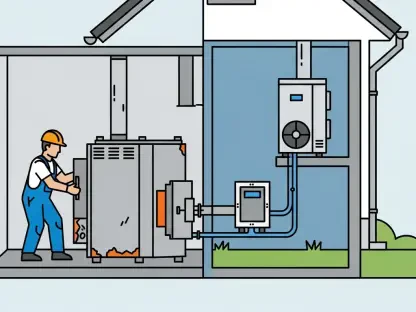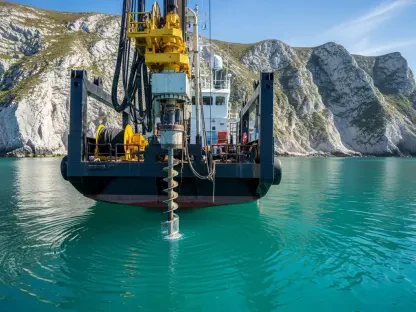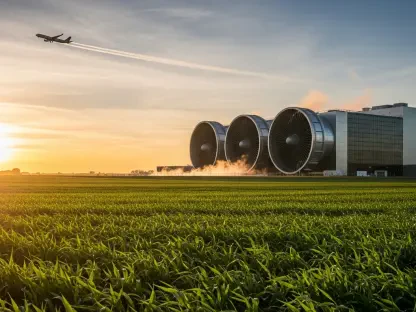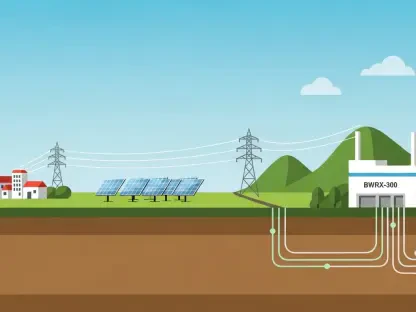In an era where industrial giants face mounting pressure to balance profitability with planetary health, one company stands out as a beacon of change in the steel sector. Mobarakeh Steel has emerged as a trailblazer, weaving environmental sustainability into the very fabric of its operations to address global challenges like climate change and resource scarcity. Far from merely meeting regulatory demands, this industry leader has embraced a proactive stance, adopting rigorous international standards and innovative practices to minimize its ecological footprint. By prioritizing sustainable development, the company not only mitigates risks associated with stricter carbon policies and supply chain disruptions but also seizes opportunities for cost savings and market expansion. This commitment to a greener future sets a powerful example for others in the sector, demonstrating that environmental responsibility can coexist with industrial success. The journey of Mobarakeh Steel reveals a strategic blueprint for achieving balanced growth in a resource-constrained world.
Pioneering Environmental Standards
Mobarakeh Steel’s dedication to sustainability begins with its long-standing adherence to globally recognized frameworks, such as ISO 14001, which has guided its environmental management system for decades. This standard provides a structured approach to identifying and controlling environmental impacts through meticulous documentation, regular audits, and data-driven decision-making. By embedding these practices into daily operations, the company ensures that its efforts go beyond surface-level compliance to foster continuous improvement. This systematic focus allows for the early identification of risks, enabling proactive measures that reduce waste and enhance resource efficiency. Moreover, the integration of scientific analysis into its processes ensures that every decision is backed by evidence, creating a robust foundation for long-term environmental stewardship. Such a commitment positions the company as a model for others in heavy industry, proving that structured systems can drive meaningful ecological progress without sacrificing operational goals.
Another key aspect of Mobarakeh Steel’s leadership is its adoption of specialized standards like ISO 14064-1 and ISO 14067, which focus on quantifying greenhouse gas emissions and assessing carbon footprints with precision. These tools enable transparent reporting and help pinpoint critical emission sources across the entire value chain, from raw material extraction to final production. By leveraging Life Cycle Inventory data, the company benchmarks its performance against global metrics, such as CO₂ intensity per ton of crude steel, to track progress and identify areas for improvement. This data-centric approach not only aids in meeting international expectations but also builds trust with stakeholders by showcasing measurable outcomes. The emphasis on transparency and accountability underscores a broader vision of sustainability as a core business principle, ensuring that environmental goals align seamlessly with industrial objectives and market demands.
Innovative Strategies for Emission Reduction
A hallmark of Mobarakeh Steel’s environmental strategy lies in its practical initiatives to curb emissions through targeted operational changes. By optimizing energy consumption, transitioning to cleaner fuel sources, and minimizing raw material usage, the company has significantly lowered its carbon output. Additionally, efforts to recycle waste and redesign high-emission processes reflect a hands-on approach to reducing environmental harm. These measures are not merely for compliance but are driven by a recognition that sustainability offers a competitive edge, opening doors to low-carbon markets and enhancing brand reputation. The use of data in these initiatives ensures that improvements are tangible and aligned with global best practices, setting a high standard for the industry. This strategic focus on actionable solutions demonstrates how industrial operations can evolve to meet the urgent demands of climate change mitigation while maintaining efficiency and profitability.
Beyond operational tweaks, Mobarakeh Steel invests in cross-functional collaboration to drive innovation in emission reduction, bringing together expertise from various departments to tackle environmental challenges holistically. This collaborative spirit fosters the development of cutting-edge solutions, such as advanced technologies for energy efficiency and waste recovery systems that turn byproducts into valuable resources. By viewing climate-related risks as opportunities for growth, the company has positioned itself to thrive in an increasingly regulated global landscape. The emphasis on innovation extends to exploring new methodologies for life cycle analysis and carbon footprint assessment, ensuring that every stage of production is scrutinized for potential improvements. Such forward-thinking practices not only address current environmental pressures but also prepare the company for future shifts in policy and consumer expectations, reinforcing its role as an industry pacesetter.
Shaping a Sustainable Industrial Future
Reflecting on Mobarakeh Steel’s journey, it’s evident that the company has carved a path of leadership by embedding sustainability into its core strategy over the years. Through rigorous adherence to international standards and a relentless pursuit of innovative solutions, it has tackled pressing issues like emissions and resource scarcity head-on. The balance struck between operational demands and ecological responsibility stands as a testament to what industrial sectors can achieve with vision and commitment. Looking ahead, other companies might draw inspiration from this model, adopting similar data-driven and collaborative approaches to address their environmental impact. A potential next step could involve scaling these practices through industry-wide partnerships, sharing insights and technologies to accelerate collective progress. Additionally, investing in emerging green technologies could further solidify such a legacy, ensuring resilience against evolving global challenges and market dynamics.









